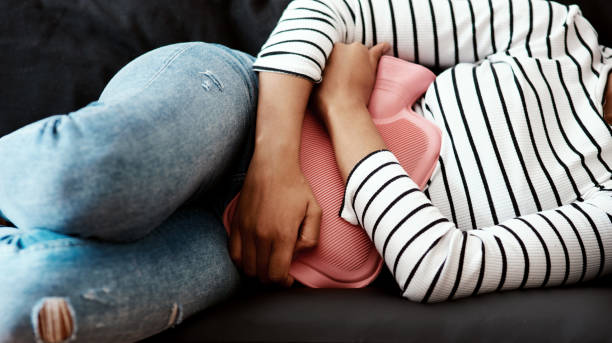It refers to the discomfort and pain in the abdominal area that occurs during menstruation. It is associated with uterine contractions and hormonal changes. Its severity can vary from person to person and can sometimes affect daily activities. Symptoms may include abdominal cramping, back pain, headache and nausea. Painful menstrual pain, It can usually be treated. Medications or alternative treatments may be used to relieve symptoms.
Painful Menstrual Pain Symptoms
It is usually felt as severe cramping in the lower abdomen, especially in the uterine area. This cramping usually begins as soon as menstrual bleeding begins and may continue for several days. Some women may experience waist or back pain along with the pain. These pains usually begin when menstrual bleeding begins and may continue throughout the menstrual period. Some women with severe pain may experience nausea and even vomiting. Headache during menstrual period is also a common symptom. Some women may experience diarrhea or constipation during menstruation.
This may be part of the pain. Women with severe pain often feel tired and weak. Some women may experience mental symptoms during menstruation. These may include irritability, restlessness, depression or anxiety. Symptoms of painful menstrual cramps It may differ for each woman, and one woman's pain experience may be different from another. If your pain is more severe than normal, it is important to consult a doctor. Pain can sometimes be a symptom of another underlying health problem. Therefore, an expert evaluation is required.
Risk Factors for Painful Menstrual Pain
 It can be found in family history. If your mother or sister is experiencing painful labor, there is a high probability that you will experience similar problems. Hormonal imbalances or hormonal changes can increase pain.
It can be found in family history. If your mother or sister is experiencing painful labor, there is a high probability that you will experience similar problems. Hormonal imbalances or hormonal changes can increase pain.
The increase in the level of hormones called prostaglandins causes excessive contraction of the uterine muscles. It may cause pain. Some health conditions that affect the pelvic area, such as pelvic inflammatory disease, increase severity. In young women, pain begins during adolescence and usually decreases over time. However, some women may find that their pain increases in severity as they get older.
Smoking can increase pain. Psychosocial factors such as stress, depression and anxiety increase the severity of pain. Hormonal birth control methods, such as birth control pills, can reduce pain in some women, while increasing it in others. These risk factors should be taken into consideration. Painful menstrual pain It is important to take appropriate treatment and precautions to relieve it. These include exercise, regular doctor check-ups, and maintaining a healthy lifestyle. It may also include practicing stress management techniques and receiving medical treatment if necessary.
Painful Menstrual Pain Treatment Methods
 Nonsteroidal anti-inflammatory drugs (NSAIDs) can be used to relieve pain. These include medications such as ibuprofen (Advil, Motrin IB) or naproxen sodium (Aleve). However, it is important to consult your doctor before using these medications. Your doctor may recommend birth control pills, hormonal IUDs to control pain.
Nonsteroidal anti-inflammatory drugs (NSAIDs) can be used to relieve pain. These include medications such as ibuprofen (Advil, Motrin IB) or naproxen sodium (Aleve). However, it is important to consult your doctor before using these medications. Your doctor may recommend birth control pills, hormonal IUDs to control pain.
You can relieve pain by using warm treatments such as a hot water bottle, a hot towel, or a warm bath. This can help you relax by relaxing the muscles. Regular exercise can relieve pain before and during menstruation. Relaxing exercises such as yoga can also help. It is important to avoid substances that can potentially increase pain, such as caffeine, salt and sugar. It may also be beneficial to follow a balanced diet and consume adequate amounts of water.
Stress can increase pain. Stress reduction techniques, such as deep breathing exercises and meditation, are used. It is important to reduce stress levels. For some people, traditional Chinese medicine techniques such as acupuncture and acupressure help relieve menstrual pain. If you have painful menstrual cramps If it is severe or shows an unusual pattern, it is important to consult a doctor. In such cases, there may be an underlying medical problem and more comprehensive treatment may be required. Because each woman's experiences are different, trial and error may be required to find the most effective treatment methods. However, the methods mentioned above can often be helpful in relieving painful menstrual cramps.






